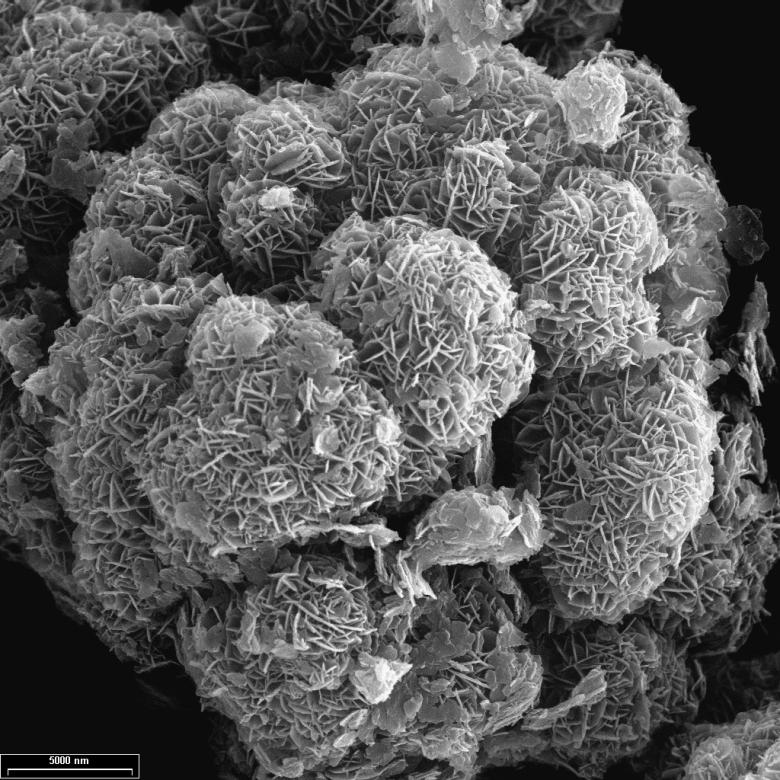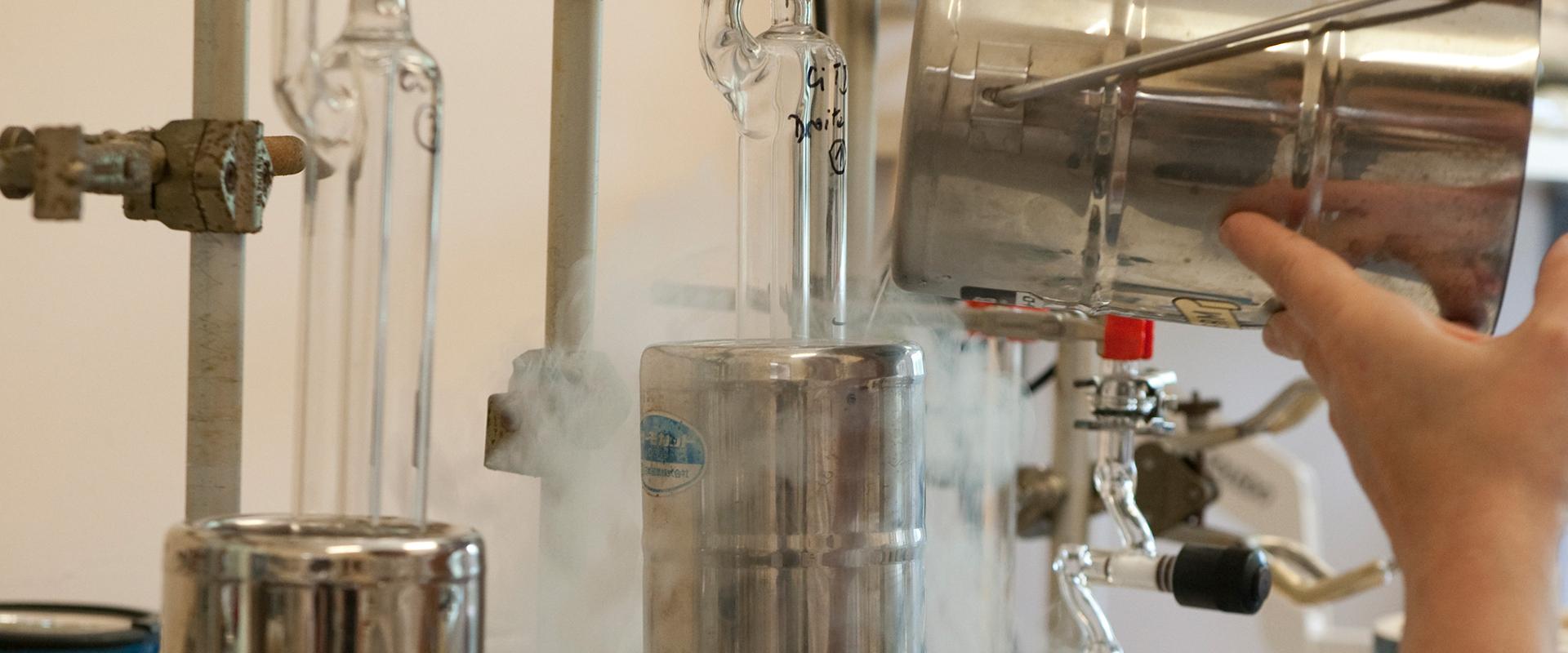
Microscopic image of double-layer hydroxides developed by BRGM to trap nitrates in water.
© BRGM - Claire Bény
The degradation of groundwaters abstracted for drinking water has multiple causes. A predominant factor is pollution by agricultural inputs, resulting in nitrate concentrations that are increasingly in excess of human health standards (50 mg/litre).
Depollution processes
Because it is not possible - at least in the short-term - to reduce these concentrations upstream, depollution processes by biological or physico-chemical means have been developed, but these are complex and costly.
A significant reduction of the pollution load
With Trainit, the BRGM, with co-financing from the Centre Region and in partnership with the Orléans Institute of Earth Sciences and Lyonnaise des Eaux, has opened up promising new perspectives.
By investigating and subsequently developing a new treatment process involving synthetic materials like double-layer hydroxides, the project has demonstrated the capacity of these compounds to substantially reduce nitrate concentrations in water, from 48 mg/litre to 8.3 mg/litre after treatment in water samples from the Tête Noire abstraction point at Saran (Beauce water table in the Loiret département).
The process relies on the ability of double-layer hydroxides to trap nitrate anions in their structure through anion exchanges.
A highly promising line of research
This “capturing” process needs to be optimised before industrial implementation - by selecting materials with optimum affinity for nitrate anions - but it is already showing considerable promise for other applications.
Using the same principle, a great many compounds, especially pharmaceutical substances which are becoming a problem in water, could also be trapped by layered double hydroxides.







